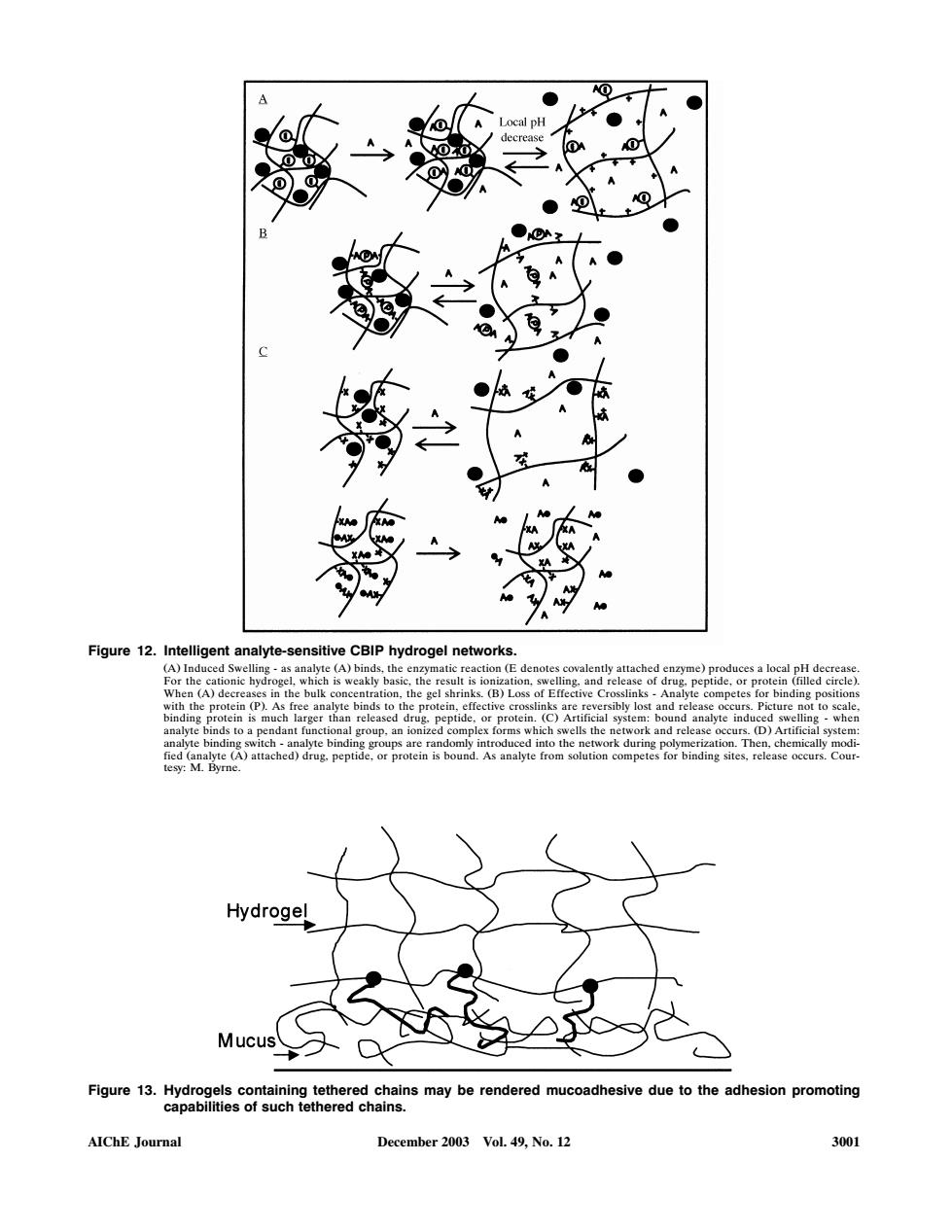正在加载图片...

Figure 12. Hydrogel Mucus promoting AIChE Journal December 2003 Vol.49,No.12 3001Figure 12. Intelligent analyte-sensitive CBIP hydrogel networks. Ž. Ž. Ž . A Induced Swelling - as analyte A binds, the enzymatic reaction E denotes covalently attached enzyme produces a local pH decrease. For the cationic hydrogel, which is weakly basic, the result is ionization, swelling, and release of drug, peptide, or protein filled circle . Ž . When A decreases in the bulk concentration, the gel shrinks. B Loss of Effective Crosslinks - Analyte competes for binding positions Ž. Ž. with the protein P . As free analyte binds to the protein, effective crosslinks are reversibly lost and release occurs. Picture not to scale, Ž . binding protein is much larger than released drug, peptide, or protein. C Artificial system: bound analyte induced swelling - when Ž . analyte binds to a pendant functional group, an ionized complex forms which swells the network and release occurs. D Artificial system: Ž . analyte binding switch - analyte binding groups are randomly introduced into the network during polymerization. Then, chemically modified analyte A attached drug, peptide, or protein is bound. As analyte from solution competes for binding sites, release occurs. Cour- Ž Ž. . tesy: M. Byrne. Figure 13. Hydrogels containing tethered chains may be rendered mucoadhesive due to the adhesion promoting capabilities of such tethered chains. AIChE Journal December 2003 Vol. 49, No. 12 3001